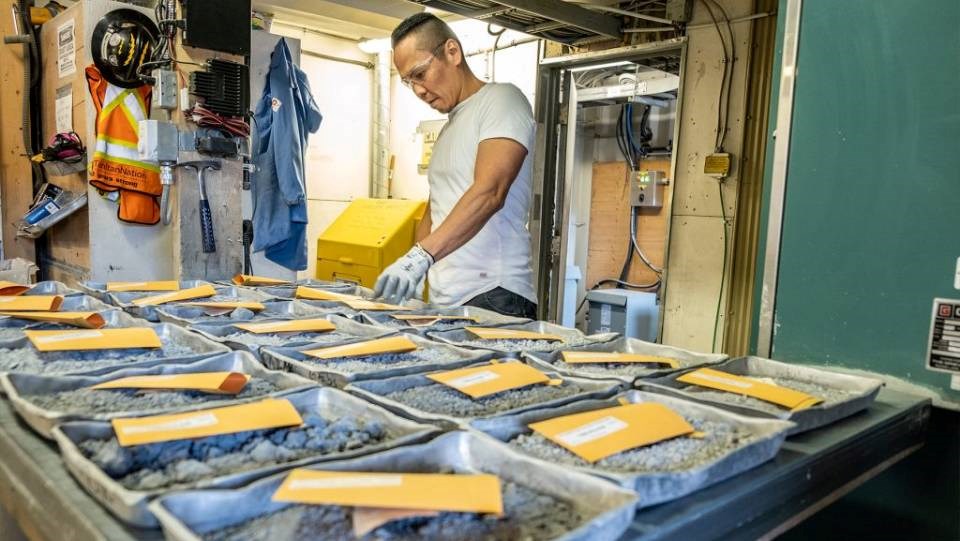As the mining industry contends with a shortage of skilled workers, Indigenous peoples have often been described as an untapped resource that could help fill the gap. But how do companies attract Indigenous workers to the sector?
That was the topic of discussion during an Aug. 25 webinar hosted by the Diversity Inclusion and Advisory Committee of the Canadian Institute of Mining, Metallurgy and Petroleum (CIM).
Erinn Mah, the senior lead of Indigenous relations at Teck, said “human, boots-on-the-ground” interactions with people are far more effective than handing someone a pamphlet and expecting them to read a job description.
But it shouldn’t just be the human resources or community relations representatives attending job fairs and other recruitment forums, she advised. Instead, companies should send people from front-line positions — a heavy duty equipment operator or someone who works in the mill — so that potential recruits can ask questions and get real answers from people employed in those roles.
“Bringing it as close to home and making it as personal as possible is the most powerful way to get through to people,” Mah said.
Freda Campbell agrees.
A member of the Tahltan Nation and the community relations director at B.C.-based Skeena Resources, Campbell said the First Nation works to attract community members who have graduated from, or are enrolled in, a mining-related post-secondary program back to the community to speak to youth about mining and what post-secondary education is like.
Ongoing since 2020, the initiative has been “very successful,” and a number of Tahltan Nation members are now working in the industry, Campbell said.
"We could do a much better job of making sure that local people understand the kinds of opportunities there are,” she said.
“It’s not hard to bring somebody into the schools and talk about what they do.”
Mah also suggested mining company leaders look to best practices from other industries for examples.
While working in the oil and gas industry, Mah witnessed the rollout of the Close to Qualify program, which helps candidates beef up their skills or qualifications in preparation to enter the next step of their career.
Under the program, if a worker has great skills for the job but is missing some qualifications, they are given the space and time to build on their qualifications until they’re ready.
“That’s a really, really good way to create that next step to the pathway,” Mah said.
“That’s something that’s within an industry-controlled environment that we can invest in.”
When it comes to the recruitment and hiring process, it’s important for the hiring manager or human resources personnel to have cultural awareness around how an Indigenous person might interview differently, she added.
Often in the culture, people may not make direct eye contact, and candidates may be too humble to talk up their skills, Mah said. By making the interview more conversational and less in a question-and-answer format, it creates more opportunity for an Indigenous candidate to be successful.
“Cultural awareness training is big part of this to make sure people understand how to conduct interviews in a culturally appropriate way and knowing that maybe Indigenous people have different signals, and may just work a little bit different than other people in interviews, and you have to be able to account for that and you're not being biased against that," Mah said.
Campbell said there are other ways industry can support Indigenous communities.
While working with Barrick, she said, the company hired a social development coordinator whose job it was to deal with the effects of the social impact of working at a mine site.
Trained as a registered therapist, the coordinator developed personal relationships with the front-line workers to understand where they needed support. The therapist was able to admit people to treatment if needed, and could continue therapy with them out in the community as well.
“So working with the community, understanding where they’re at, and supporting their own initiatives that they’re facing is tremendously helpful and a great opportunity for both organizations,” Campbell said.
Companies can even show support through their physical assets, Mah said.
If the company is setting up a local office, locate it on the First Nation, creating economic development opportunities and tax benefits for the community, she suggested.
Incorporate into the building’s design natural materials, signage that includes the community’s language, or artwork commissioned by local artists, Mah added.
At Skeena, photographs of local wildlife with their Tahltan names are being put up around the property, and a land declaration is being drawn up to be placed at the entrance to the site so it’s front and centre for visitors to see, Campbell said.
Together, all these initiatives create welcoming, culturally appropriate workplaces that make it more appealing for Indigenous workers to consider.
Campbell said it’s a benefit to the companies to have a skilled workforce that wants to remain close to home.
Indigenous peoples can be trained in critical positions so that they’re close by when needed, which also saves companies from flying workers in and out from across the country.
"That is of incredible value to the mining company if you have a workforce that's invested in staying close to home and their communities,” she said.
“You protect your project and you benefit the local community — that's a win-win.”
